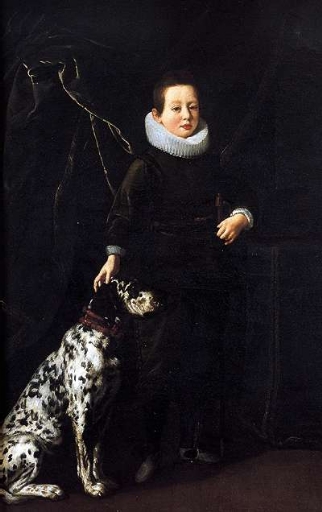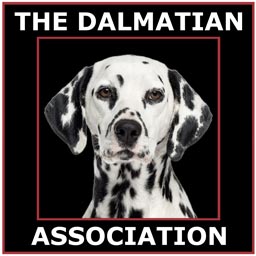The History of the Dalmatian
From Ancient Roots to Modern Companions
Introduction
The Dalmatian is a breed steeped in history and mystery. Known for its distinctive black or liver spotted coat, the Dalmatian has captured the imaginations of dog lovers across the globe. However, the true origins and historical journey of this captivating breed are as unique as its appearance.
Ancient Beginnings
The exact origins of the Dalmatian are shrouded in mystery, with various theories suggesting ties to different regions and cultures. Some experts believe that the breed’s roots can be traced back to ancient Egypt, where spotted dogs are depicted in art and hieroglyphs. Others suggest connections to ancient Greece or Rome, where similar dogs were used for hunting and guarding purposes. One of the most compelling theories links the Dalmatian to Dalmatia, a region along the Adriatic coast in present-day Croatia. It is from this region that the breed is believed to have derived its name. However, there is little concrete evidence to fully confirm this theory, and the Dalmatian’s early history remains a blend of fact and folklore. It is interesting to note that much of the coastline of Dalmatia is made up of white / grey pebble beaches, and if a Dalmatian stays still against this background it virtually disappears until it moves.
Medieval and Renaissance Europe

Francesco di Cosimo II de’ Medici (1614–1634) with a Dalmatian, by Justus Sustermans
The Dalmatian’s presence in Europe became more pronounced during the Middle Ages and the Renaissance. The breed was often associated with nobility and was used as a carriage dog, running alongside horse-drawn carriages to protect them from bandits and other threats. This role also showcased the Dalmatian’s endurance, agility, and protective instincts.
The number of dogs accompanying a coach often served as an indicator of the wealth or status of its occupants; affluent individuals might have had six or eight dogs. These coach dogs were housed in the stables, where they formed bonds with the horses from a young age. Their duties included clearing crowded streets and guarding the valuable horses in the stables.
Illustrations and written records from this period indicate that the Dalmatian’s distinctive spotted coat was already a defining characteristic. The breed’s striking appearance, combined with its loyalty and versatility, made it a popular choice among the European aristocracy.
The Firehouse Dog
In the 19th century, the Dalmatian found a new and enduring role as a firehouse dog in the USA. In the days before motorized fire engines, Dalmatians were trained to run ahead of horse-drawn fire trucks, clearing the path and guiding the horses to the fire. Their natural affinity for horses and their impressive stamina made them ideal for this task. Even after the advent of motorized fire engines, Dalmatians remained a symbol of the fire service in the USA. They were often kept in firehouses as mascots and companions, cementing their association with firefighters and their role in public safety.
A Beloved Companion
Throughout the 20th century, the Dalmatian’s popularity continued to grow, thanks in part to its appearances in literature, film, and television. The breed’s starring role in Dodie Smith’s novel “The Hundred and One Dalmatians” and its subsequent Disney adaptations brought it into the homes and hearts of countless families. Despite its glamorous image, the Dalmatian is a breed that requires careful consideration and commitment. Known for their boundless energy, intelligence, and loyalty, Dalmatians thrive in active households where they receive plenty of exercise and mental stimulation. They are also known for their strong-willed nature, which can be a challenge for inexperienced dog owners.
Health and Genetics
Like all breeds, Dalmatians have specific health concerns that prospective owners should be aware of. One of the most notable issues is deafness, which affects a significant percentage of the breed. This percentage appears to be being gradually reduced through selective breeding. The Royal Kennel Club asks that breeders conduct hearing tests on puppies to ensure they are aware of any hearing impairments, and that a BAER certificate is forwarded to them when dogs are registered. Another genetic consideration is the breed’s unique uric acid metabolism. Dalmatians are prone to forming urinary stones, which can cause health problems if not managed properly. A diet low in purines and adequate hydration are essential for maintaining the breed’s urinary health.
Modern Day
Today, the Dalmatian is cherished as both a companion animal and a show dog. The breed’s striking appearance and graceful movement make it a standout in the show ring, while its affectionate and playful nature endears it to families around the world. Despite the challenges that come with owning a Dalmatian, those who are dedicated to the breed find its loyalty, intelligence, and unique personality to be immensely rewarding. Whether as a beloved family pet, a competitor in canine sports, or a symbol of firefighting heritage, the Dalmatian continues to leave a lasting impression.
Conclusion
The Dalmatian’s journey from ancient roots to modern-day companion is a testament to the breed’s resilience, versatility, and enduring charm. While its history may be filled with as many spots as its coat, the Dalmatian’s impact on human culture and its role as a loyal companion remain clear and unwavering. From the halls of nobility to the firehouses of yesteryear, and ultimately to the hearts of dog lovers everywhere, the Dalmatian’s legacy is one of beauty, bravery, and boundless spirit.
